Are you looking to give someone the green light to handle your rental property matters? Writing a landlord authorization letter can be a simple yet crucial step in ensuring everything runs smoothly while you're away or occupied. This letter not only communicates your wishes but also provides peace of mind to both you and your designated representative. Dive into our article for a detailed breakdown of crafting the perfect landlord authorization letter!
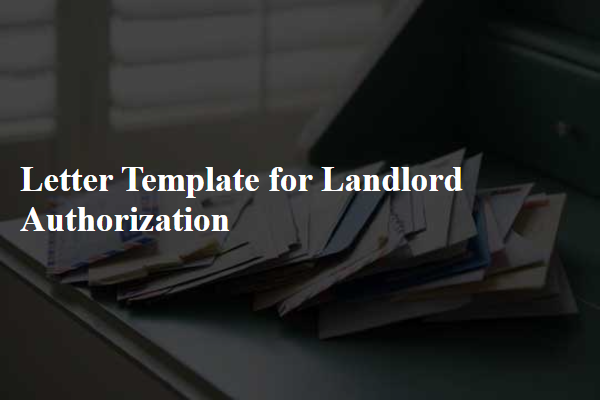
Accurate landlord identification and contact details
Landlord authorization requires precise identification and contact information to ensure a smooth communication process. Full name of the landlord (for instance, John Smith), official mailing address (e.g., 123 Maple Street, Springfield, IL 62704), and accurate phone number (like +1 (555) 123-4567) are essential. Email address (such as johnsmith@email.com) increases efficiency in correspondence. It is critical to confirm that the details are current to prevent miscommunication. Documentation should also include property specifics, like the unit number (e.g., Apt 4B) and lease agreement reference number (e.g., Lease #456789) for clarity. These elements contribute significantly to the legitimacy of the authorization process.
Clear tenant identification and property address
A landlord authorization letter should include clear identification of the tenant, including full name and any relevant identification number (such as a driver's license number). The property address must be specified in detail, including street number, street name, city, state, and zip code. Additionally, the letter should mention the specific permissions being granted, such as allowing repair access, lease transfer abilities, or other relevant property management tasks. This formal communication serves to protect both the landlord and tenant, ensuring clear understanding of terms and responsibilities associated with the tenancy agreement.
Explicit authorization purpose and permissions
Landlord authorization allows tenants to access properties for specific purposes. This includes maintenance requests, repairs, inspections, or emergencies. Explicit permissions enable landlords to outline conditions under which tenants or third parties may enter the premises. The authorization typically includes details such as tenant name, property address, and specific dates for access. Landlords may also specify tasks permitted during each visit, ensuring clarity on responsibilities and expectations. Such documentation fosters communication regarding property management and tenant rights, providing legal protection for both parties.
Defined duration and conditions of authorization
Landlord authorization is a formal document granting permission to a tenant or individual for certain actions within a rental property. Clear conditions must be outlined, specifying the defined duration of the authorization, typically ranging from a few months to a year, depending on the agreement reached. Essential details include the landlord's name and contact information, the tenant's name, property address, and the specific actions authorized, such as subletting, renovations, or property access for maintenance purposes. Additional requirements may include restrictions on the types of tenants allowed, acceptable hours for property access, and the necessity for the landlord's consent for any alterations. Ensuring detailed terms safeguards both parties, promoting transparency and mutual understanding during the authorization period.
Formal signatures and date of agreement
A formal landlord authorization document typically includes key elements to establish legitimacy and clarity. The document should start with the landlord's full name and contact information, followed by the tenant's name and property address, such as "123 Maple Street, Springfield, IL, 62704." The purpose of the authorization should be clearly stated, explaining the necessary permissions, whether it's for a maintenance request, lease transfer, or pet approval. The date of the agreement should be included at the bottom, indicating when the authorization becomes effective, for instance, "Date: October 15, 2023." Finally, formal signatures from both the landlord and tenant are required, providing legal acknowledgment of the agreement. This structure ensures a clear understanding of responsibilities and expectations between the parties involved.

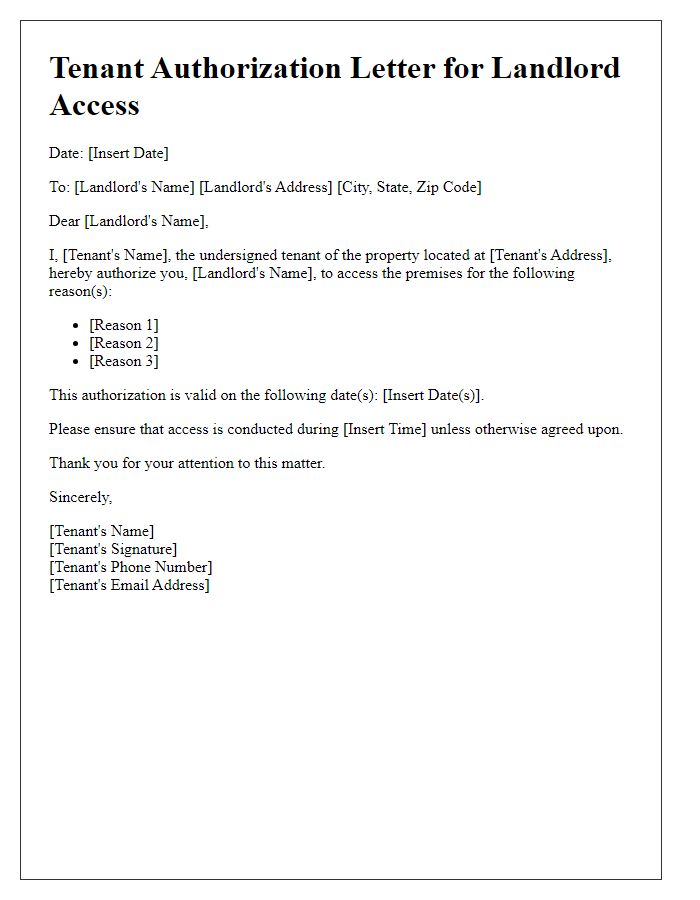
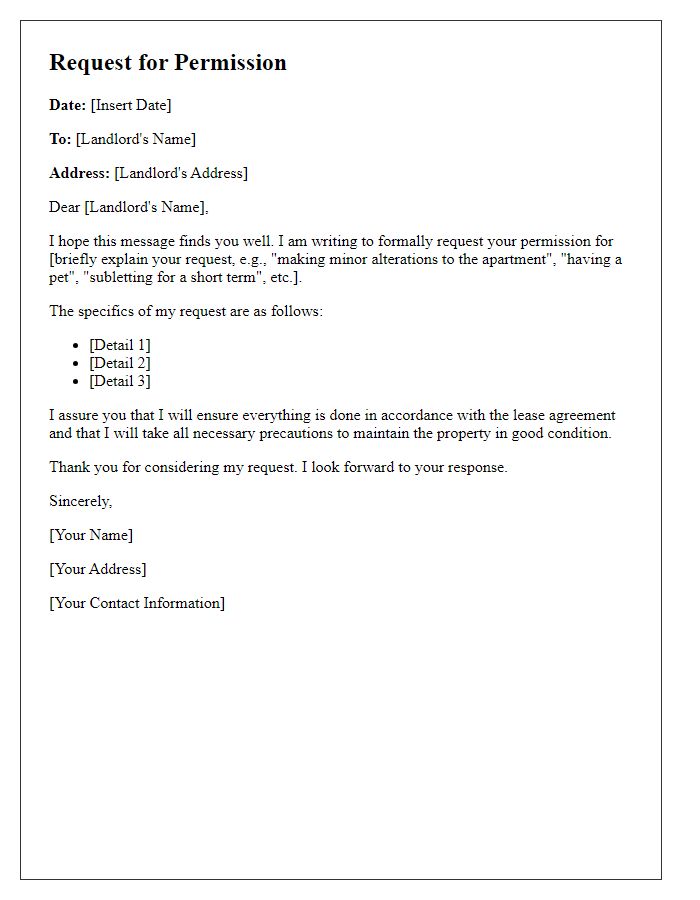
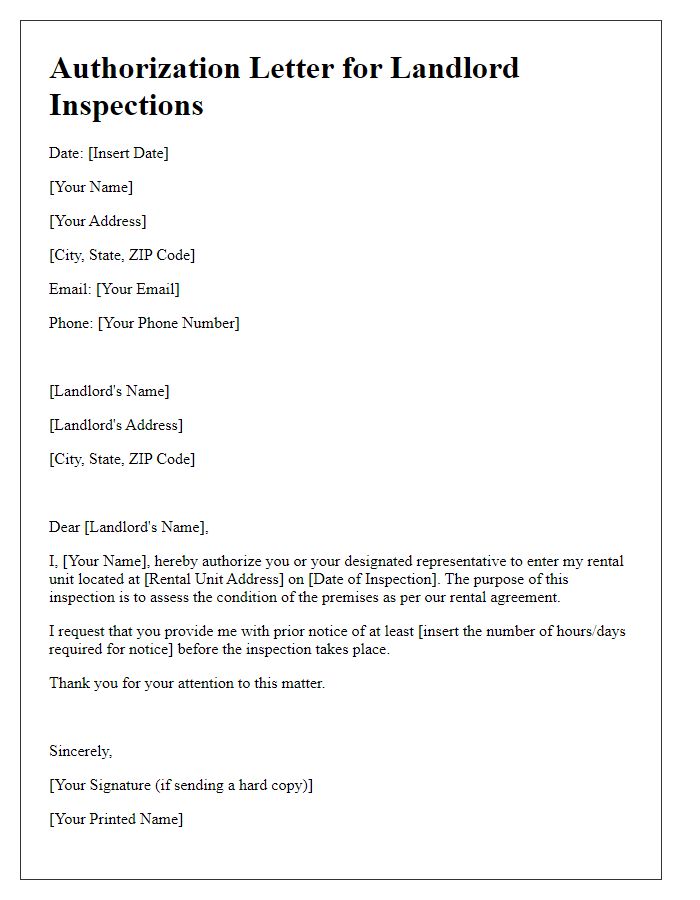
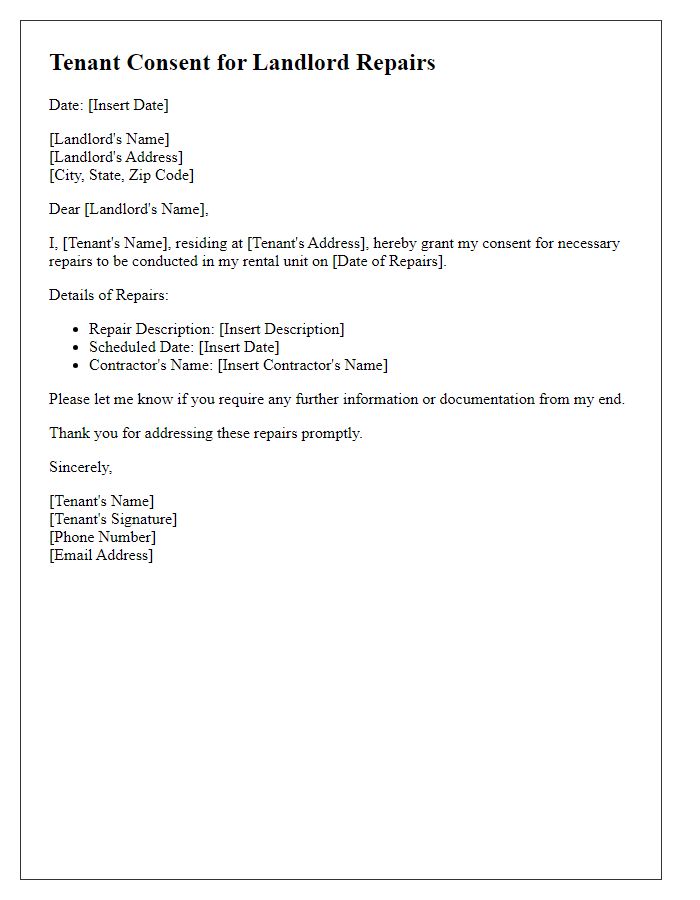
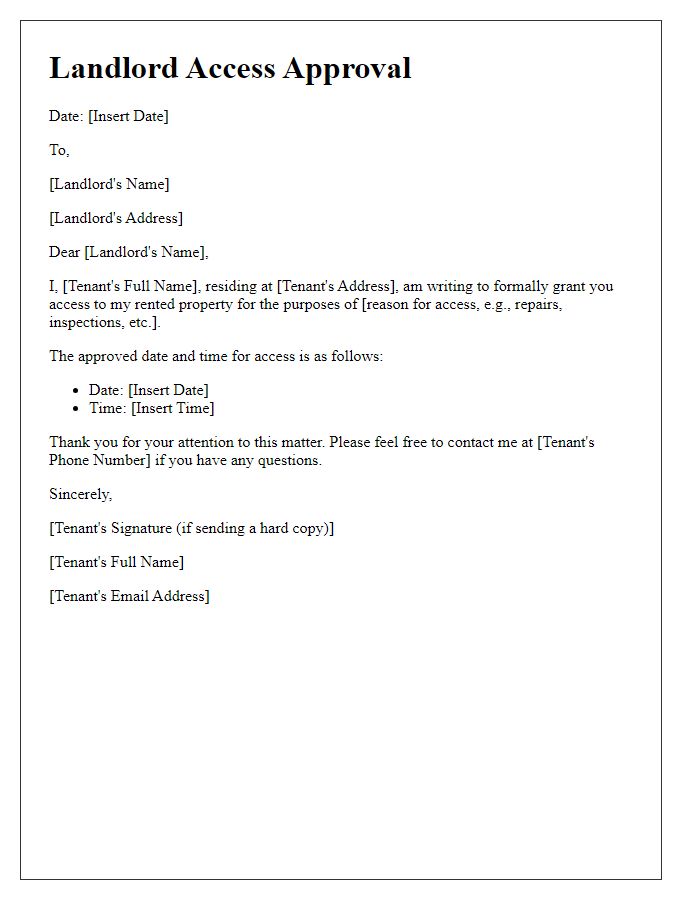
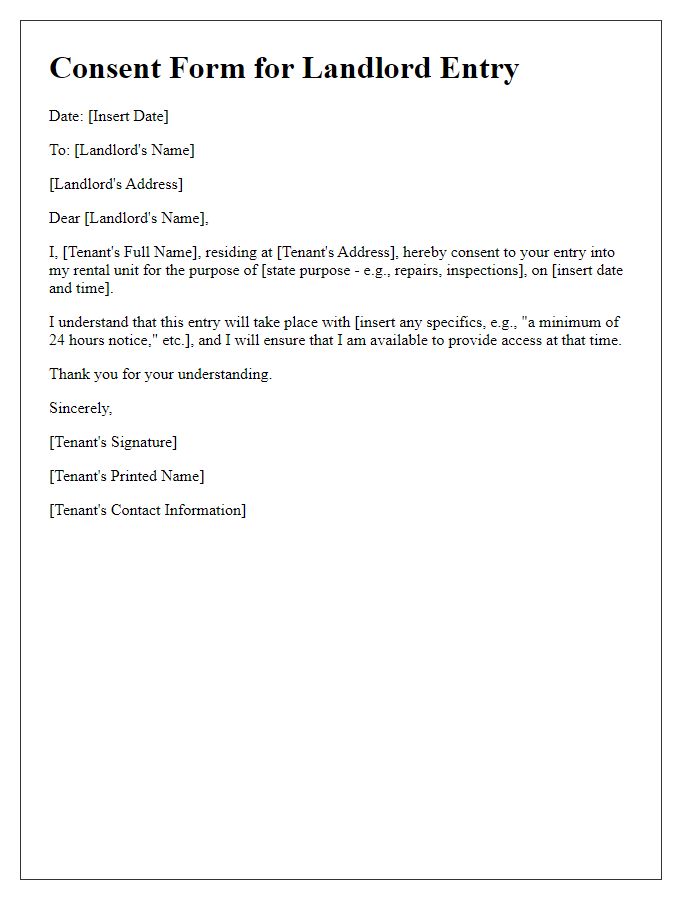
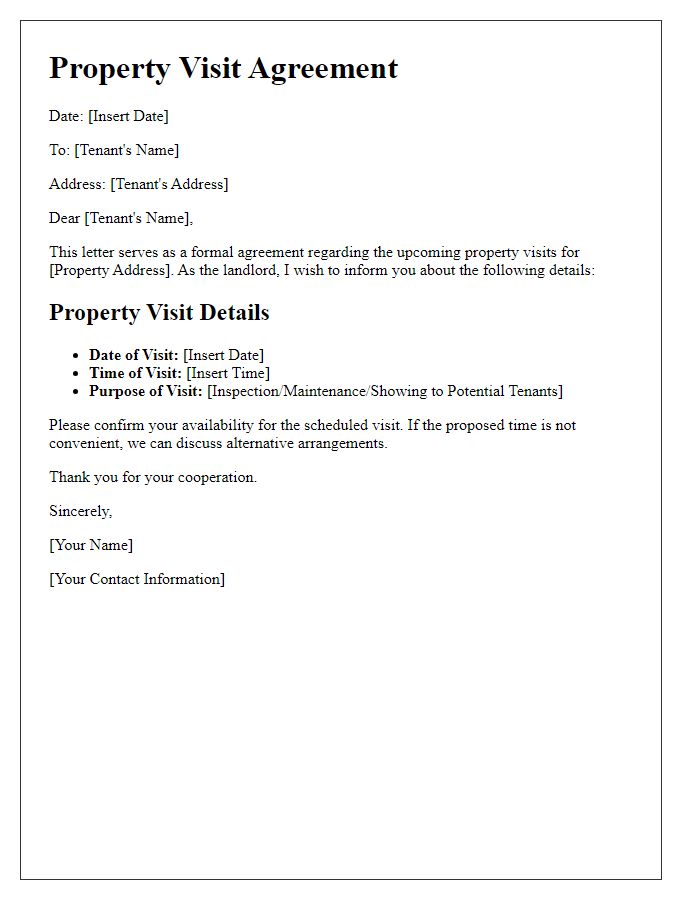
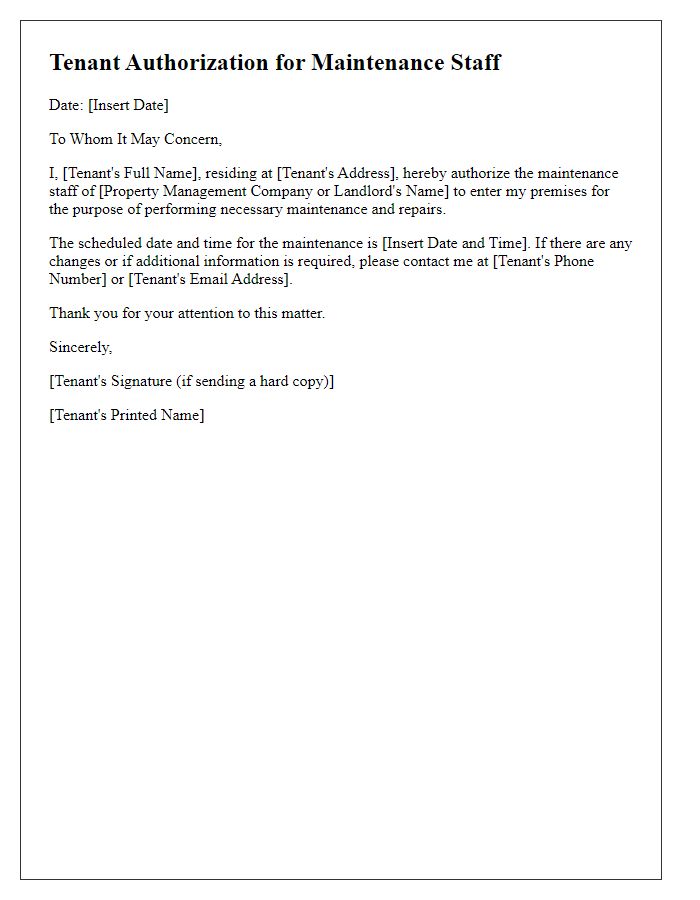
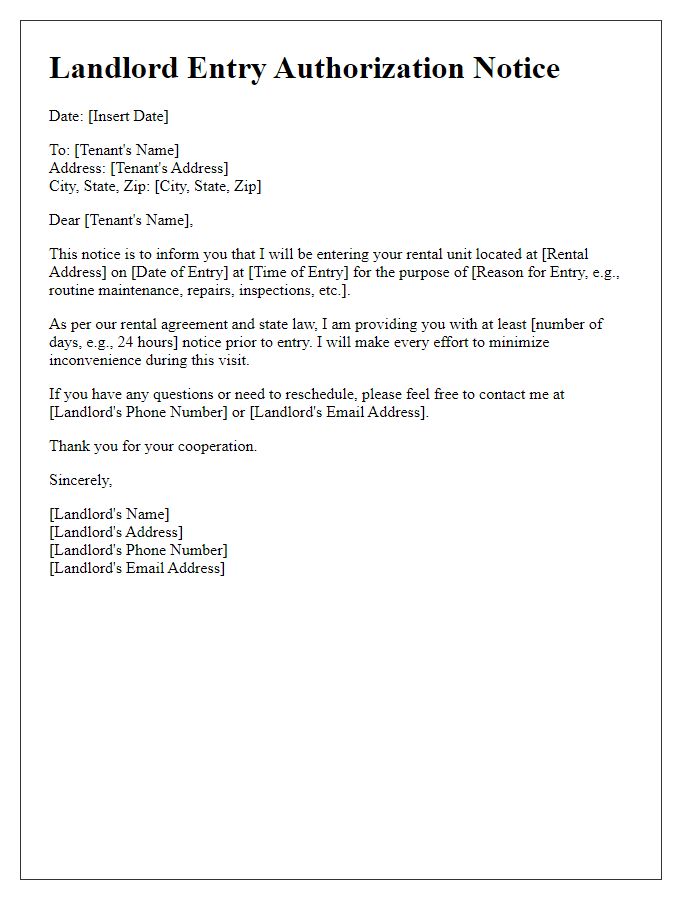
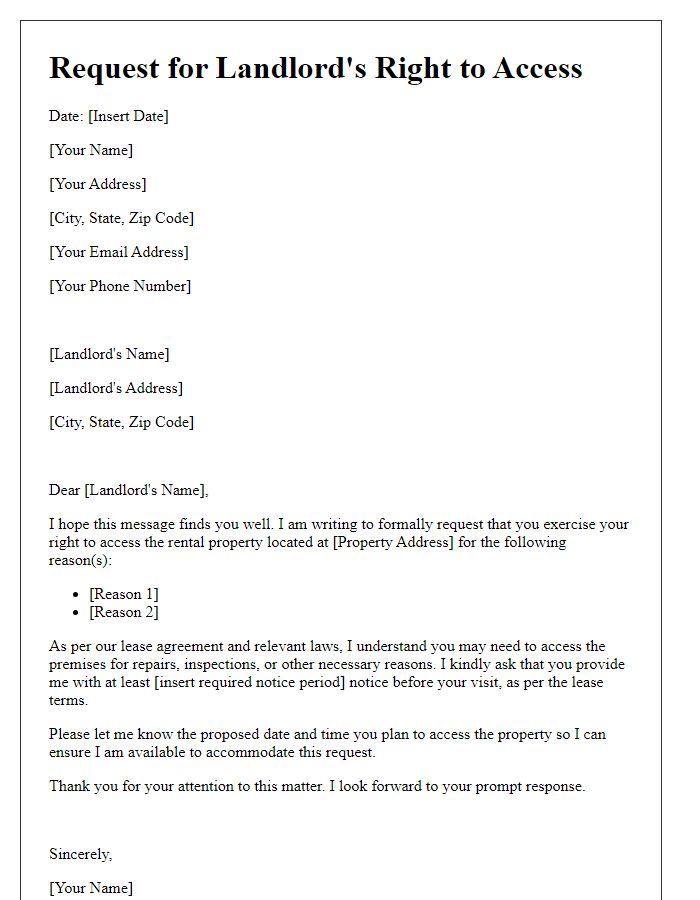

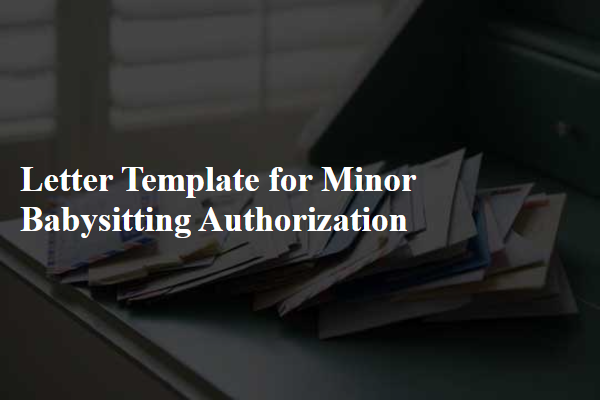
Comments